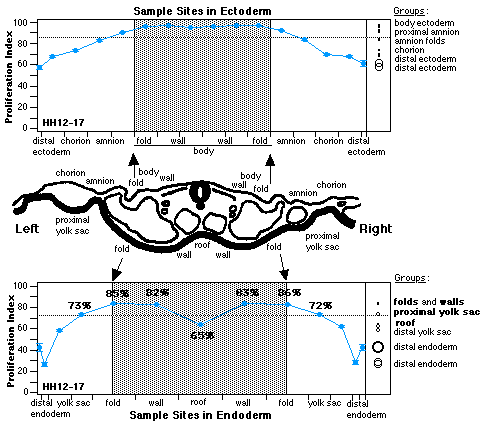Abstract

A profile of proliferative growth assessed with tritium autoradiograms from White Leghorn embryo stages Hamburger-Hamilton 6-21 labeled in ovo presents evidence of hinged folding driven by localized differential cell proliferation in endoderm. There is a significant, bilateral pattern, and differences are most pronounced in axial levels that are folding and rotating. Highest proliferation is in cells producing folds; lowest proliferation is in median cells. Localized changes in cell shape are lacking, as are TUNEL markers and cell morphology that would suggest involvement of apoptosis. Folding endoderm to form gut tube appears to be a process that is driven by domains of high cell proliferation flanking a domain of significantly lower proliferation. When considered in the context of an epithelium attached to subjacent mesoderm, these differentials could produce a forced and directed buckling of endoderm into lateral folds that join and enclose a tube. Patterns suggest that endoderm folds about a median hinge. In the light of this new information, we suggest it is more precise to refine the term, median hinge point (MHP), to neural hinge point (NHP) and gut hinge point (GHP).
Grant sponsor: Howard Hughes Medical Institute; Grant sponsor: Margaret Bundy Scott Fellowship; Grant sponsor: Casstevens Family Fund; Grant sponsor: Hamilton College Faculty Research Funds; Grant sponsor: Hamilton College Academic Fund for Seniors.
Developmental Dynamics 216:398-410 (1999)
© 1990 SAMiller
